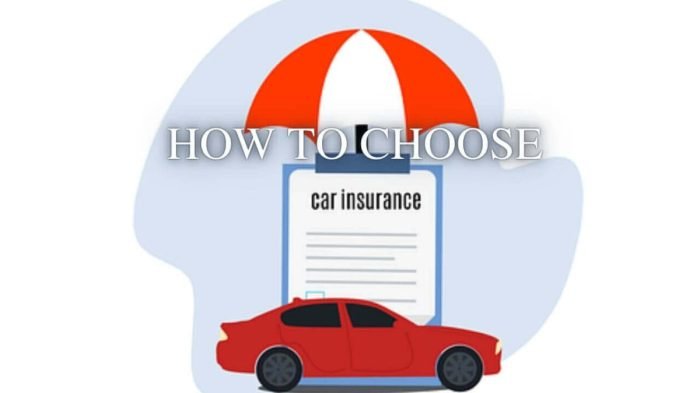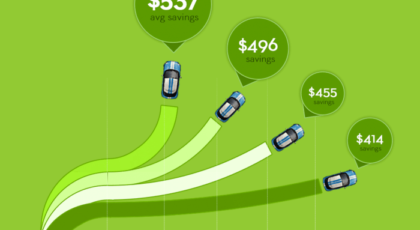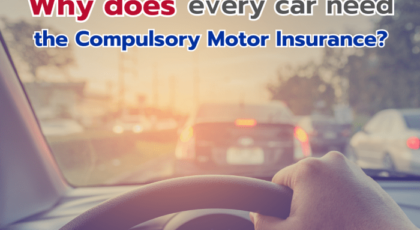A Guide to Choosing Car Insurance for First-Time Car Buyers in America
A Guide to Choosing Car Insurance for First-Time Car Buyers in America: Buying your first car is exciting, but navigating the world of car insurance can feel overwhelming. This guide breaks down the essentials, helping you understand the different types of coverage, factors affecting your premiums, and how to find the best policy for your needs and budget. From understanding liability and collision coverage to comparing quotes and finding discounts, we’ll equip you with the knowledge to make informed decisions.
We’ll cover everything from the basics of car insurance terminology to more advanced topics like uninsured/underinsured motorist coverage and the claims process. By the end, you’ll be confident in your ability to choose a car insurance policy that provides adequate protection without breaking the bank.
Table of Contents
ToggleFactors Affecting Car Insurance Premiums
Getting your first car is exciting, but the cost of insurance can be a surprise. Understanding what influences your premiums will help you budget effectively and potentially find ways to save money. Several key factors play a significant role in determining how much you’ll pay.
Your car insurance premium isn’t a random number; it’s calculated based on a comprehensive assessment of your risk profile. Insurance companies use statistical data and actuarial models to predict the likelihood of you filing a claim. The more risk you represent, the higher your premium will be. This risk assessment considers various factors, some of which you can control and others you can’t.
Age and Driving History
Your age is a major factor because younger drivers statistically have a higher accident rate. Inexperience and risk-taking behavior contribute to this. Insurance companies often offer discounts to drivers who reach a certain age (usually around 25) and have maintained a clean driving record. A history of accidents, speeding tickets, or DUI convictions will significantly increase your premiums.
For example, a young driver with multiple speeding tickets might pay double what a more experienced driver with a clean record pays for the same car.
Location
Where you live heavily influences your insurance rates. Areas with high crime rates, a greater number of accidents, or higher rates of car theft will generally have higher insurance premiums. This is because insurance companies face a greater risk of paying out claims in these locations. For instance, living in a densely populated urban area with heavy traffic might result in a higher premium compared to living in a rural area with fewer cars and lower accident rates.
Car Make and Model
The type of car you drive is another crucial factor. Insurance companies consider the car’s safety features, repair costs, and its propensity to be stolen. Cars with advanced safety features like anti-lock brakes and airbags might receive lower premiums. Conversely, vehicles with a history of high repair costs or frequent theft will likely lead to higher premiums.
For example, a high-performance sports car will typically cost more to insure than a smaller, economical sedan due to its higher repair costs and greater potential for accidents.
Buying your first car in America is exciting, but don’t forget the crucial step of securing car insurance. Finding the right policy can feel overwhelming, but thankfully, resources are available to help you navigate the process. For example, you might find helpful tools and information on sites like AdminLurp , which can offer insights into various insurance options.
Ultimately, comparing quotes and understanding your coverage needs is key to choosing the best car insurance for your situation.
Vehicle Type
Different vehicle types carry different insurance rates. Generally, sedans tend to have lower premiums compared to SUVs and trucks. This is often due to factors like size, weight, and repair costs. SUVs and trucks are often larger and heavier, leading to more expensive repairs in case of an accident. Trucks, in particular, are often associated with higher accident rates and therefore higher insurance premiums.
A compact sedan will typically be cheaper to insure than a large SUV or pickup truck.
Getting your first car in America? A Guide to Choosing Car Insurance for First-Time Car Buyers will help you navigate the process. One smart money-saving move to consider, especially if you’re also getting a new home, is learning about bundling home and auto insurance: pros and cons for families , as it can often lead to significant discounts.
Understanding these options is crucial before committing to a policy, so you can make the best choice for your budget.
Choosing the Right Coverage Levels

Source: iibarizona.com
Buying your first car in America? Our guide to choosing car insurance walks you through the basics. But if you’re already thinking ahead to a larger family and multiple vehicles, you’ll want to check out resources on best car insurance options for families with multiple vehicles to plan for the future. Understanding your needs now will help you make informed decisions as your insurance needs evolve.
Choosing the right car insurance coverage is crucial for protecting yourself financially in the event of an accident. Understanding your state’s minimum requirements and considering the potential costs of higher coverage limits is essential for making an informed decision. This section will guide you through the process of selecting appropriate liability, collision, and comprehensive coverage levels.
Minimum Insurance Requirements by State, A Guide to Choosing Car Insurance for First-Time Car Buyers in America
State minimum insurance requirements for liability coverage vary significantly across the United States. These minimums often represent the lowest level of protection you can legally carry and may not be sufficient to cover the costs associated with a serious accident. Failing to meet your state’s minimum requirements can result in significant fines and license suspension. It’s vital to check your state’s Department of Motor Vehicles (DMV) website for precise details on the current minimums.
These requirements typically specify bodily injury liability (BI) and property damage liability (PD). BI covers medical expenses and other damages to those injured in an accident you cause, while PD covers damage to the other person’s vehicle or property.
Benefits of Higher Coverage Limits
While minimum coverage might seem appealing due to its lower cost, higher liability limits offer significantly greater financial protection. In the event of a serious accident where you’re at fault, your liability coverage pays for the injuries and damages you cause to others. If your coverage limits are too low, you could face significant personal financial responsibility for exceeding those limits, potentially including lawsuits, legal fees, and medical bills far surpassing your policy’s payout.
Higher limits provide peace of mind knowing you’re adequately protected against potentially devastating financial consequences. The added cost for increased coverage is usually far outweighed by the potential financial burden avoided in a major accident.
Liability Limits and Accident Implications
The following table compares different liability limits and their potential implications in an accident scenario. Remember, these are examples and the actual costs can vary greatly depending on the severity of the accident and location.
Buying your first car in America? Navigating car insurance can feel overwhelming, but it doesn’t have to be. This guide focuses on first-timers, but the principles are similar to choosing coverage for your family; check out this helpful resource on how to choose the best car insurance coverage for my family to get a broader perspective.
Understanding your needs, whether it’s just you or a whole family, is key to finding the right policy and price.
| State | Minimum Liability | Recommended Liability |
|---|---|---|
| California | 15/30/5 | 100/300/100 |
| Texas | 30/60/25 | 100/300/100 |
| Florida | 10/20/10 | 100/300/100 |
| New York | 25/50/10 | 250/500/100 |
| Illinois | 20/40/15 | 100/300/100 |
*Note: Liability limits are typically expressed as three numbers: Bodily Injury per person / Bodily Injury per accident / Property Damage. For example, 100/300/100 means $100,000 per injured person, $300,000 total for all injured people in one accident, and $100,000 for property damage.*
Finding and Comparing Insurance Quotes: A Guide To Choosing Car Insurance For First-Time Car Buyers In America
Getting the best car insurance rate as a new driver involves more than just picking the first company you see. Shopping around and comparing quotes from multiple insurers is crucial to finding the right coverage at the best price. This process might seem daunting, but with a structured approach, it becomes manageable and rewarding.
Obtaining Quotes from Multiple Providers
To effectively compare car insurance quotes, you’ll need to gather quotes from at least three to five different insurance companies. This ensures you have a broad range of options and aren’t limited to a single insurer’s pricing structure. Begin by creating a list of potential providers. You can use online comparison websites, check with your local independent insurance agents, or directly visit the websites of major national insurance companies.
Remember to be consistent with the information you provide to each company to ensure an accurate comparison.
- Gather Necessary Information: Before starting, collect all the necessary information, including your driver’s license number, vehicle identification number (VIN), address, and driving history. Accurate information ensures accurate quotes.
- Use Online Comparison Tools: Many websites allow you to input your information once and receive quotes from multiple insurers simultaneously. This saves time and effort.
- Contact Insurers Directly: Supplement online comparisons by contacting insurers directly. This allows you to ask specific questions and clarify any details that might be unclear on comparison websites.
- Obtain Multiple Quotes: Don’t settle for just one or two quotes. Aim for at least three to five quotes to get a true sense of the market.
- Document Everything: Keep a record of all quotes, including the insurer’s name, coverage details, and the price. This will make comparing easier.
Effectively Comparing Insurance Quotes
Once you’ve gathered several quotes, carefully review each one, paying close attention to the details beyond just the price. Don’t just focus on the lowest premium; ensure the coverage adequately protects you. A seemingly cheaper policy with insufficient coverage could cost you significantly more in the event of an accident.
- Coverage Levels: Compare the liability limits, collision, comprehensive, and uninsured/underinsured motorist coverage offered in each quote. Ensure the coverage levels meet your needs and legal requirements.
- Deductibles: Examine the deductible amounts for each type of coverage. Higher deductibles typically result in lower premiums, but you’ll pay more out-of-pocket if you file a claim.
- Discounts: Check for available discounts such as good driver discounts, multi-car discounts, or bundling discounts (home and auto insurance). These can significantly reduce your overall cost.
- Customer Service: Consider the insurer’s reputation for customer service. Read online reviews and check ratings from independent organizations.
- Financial Stability: Research the financial strength of the insurance company. You want to ensure they can pay out claims if needed.
Comparison Factors for Decision-Making
Making the right choice requires a balanced approach, considering both cost and coverage. Here’s a summary of factors to consider:
- Premium Cost: The total annual cost of the insurance policy.
- Liability Coverage: The amount the insurer will pay for injuries or damages you cause to others.
- Collision Coverage: Covers damage to your car in an accident, regardless of fault.
- Comprehensive Coverage: Covers damage to your car from non-collision events (e.g., theft, vandalism, weather).
- Uninsured/Underinsured Motorist Coverage: Protects you if you’re involved in an accident with an uninsured or underinsured driver.
- Deductible Amount: The amount you pay out-of-pocket before your insurance coverage kicks in.
- Discounts Offered: Any discounts available based on your driving record, vehicle, or other factors.
- Customer Service Ratings: The insurer’s reputation for handling claims and providing customer support.
- Financial Strength Rating: An indicator of the insurer’s financial stability and ability to pay claims.
Understanding Deductibles and Premiums
Choosing car insurance involves understanding the interplay between your deductible and your premium. These two components are fundamentally linked, and making informed decisions about them is crucial for managing your insurance costs effectively. A lower premium often means a higher deductible, and vice versa.Your premium is the amount you pay regularly (monthly, quarterly, or annually) to maintain your car insurance policy.
Buying your first car in America? A Guide to Choosing Car Insurance for First-Time Car Buyers in America will help you navigate the process. A key step is to carefully review your options and, importantly, comparing car insurance quotes from different companies to find the best coverage at the best price. This comparison shopping will ultimately save you money and ensure you have the right protection for your new vehicle.
Remember, the right insurance is crucial for peace of mind.
Your deductible, on the other hand, is the amount you’ll pay out-of-pocket before your insurance coverage kicks in after an accident or covered incident.
Deductible and Premium Relationship
The relationship between deductibles and premiums is inverse. This means that as your deductible increases, your premium generally decreases. Conversely, a lower deductible will typically result in a higher premium. Insurance companies offer this trade-off because a higher deductible signifies less risk for them; you’re agreeing to shoulder more of the financial burden in case of a claim.
This allows the insurance company to lower your premium, reflecting the reduced risk they are taking. The opposite is also true: a lower deductible means you’ll pay less out-of-pocket if you need to file a claim, but your monthly or annual premium will be higher to reflect the increased risk the insurance company is assuming.
Deductible Choices and Overall Insurance Costs
Consider this example: Let’s say you’re comparing two policies with identical coverage. Policy A has a $500 deductible, while Policy B has a $1000 deductible. Policy A will likely have a higher premium than Policy B. However, if you were to make a claim, you would pay $500 out-of-pocket with Policy A and $1000 with Policy B.
The decision of which policy is better depends on your risk tolerance and financial situation. If you have a higher risk tolerance and a larger emergency fund, a higher deductible (and lower premium) might be more suitable. If you prefer lower out-of-pocket expenses in case of an accident, a lower deductible (and higher premium) might be preferable.
Impact of Varying Deductibles on Annual Premiums
The following table illustrates how different deductible choices can affect your annual premiums for liability, collision, and comprehensive coverage. These are sample figures and actual premiums will vary based on factors like your age, driving record, location, and the type of vehicle you insure.
Buying your first car in America? A Guide to Choosing Car Insurance for First-Time Car Buyers in America will help you navigate the process. One key aspect is finding the right coverage at the best price, especially if you’re a young driver. For example, you might be able to find great deals by checking out resources on affordable auto insurance for young drivers with good grades , which can significantly lower your premiums.
This guide will cover other important factors to consider, ensuring you’re fully protected on the road.
| Deductible | Liability Premium | Collision Premium | Comprehensive Premium |
|---|---|---|---|
| $250 | $600 | $450 | $200 |
| $500 | $550 | $400 | $175 |
| $1000 | $500 | $350 | $150 |
| $2000 | $450 | $300 | $125 |
End of Discussion

Source: monitoringclub.org
Securing the right car insurance is a crucial step in responsible car ownership. By understanding the different types of coverage, comparing quotes, and leveraging available discounts, you can find a policy that balances protection with affordability. Remember, your insurance needs might evolve over time, so regularly reviewing and updating your policy is essential. Drive safely and enjoy the open road!
FAQ
What is the difference between liability and collision coverage?
Liability coverage pays for damages you cause to others in an accident. Collision coverage pays for repairs to your car, regardless of who’s at fault.
How long does it take to get a car insurance quote?
Getting a quote usually takes just a few minutes online, but the time can vary depending on the insurer and the information requested.
Can I pay my car insurance monthly?
Most insurers offer monthly payment options, but it often comes with a small additional fee.
What happens if I get into an accident and don’t have insurance?
Driving without insurance is illegal and can result in hefty fines, license suspension, and potential legal repercussions. You would be responsible for all accident-related costs.



